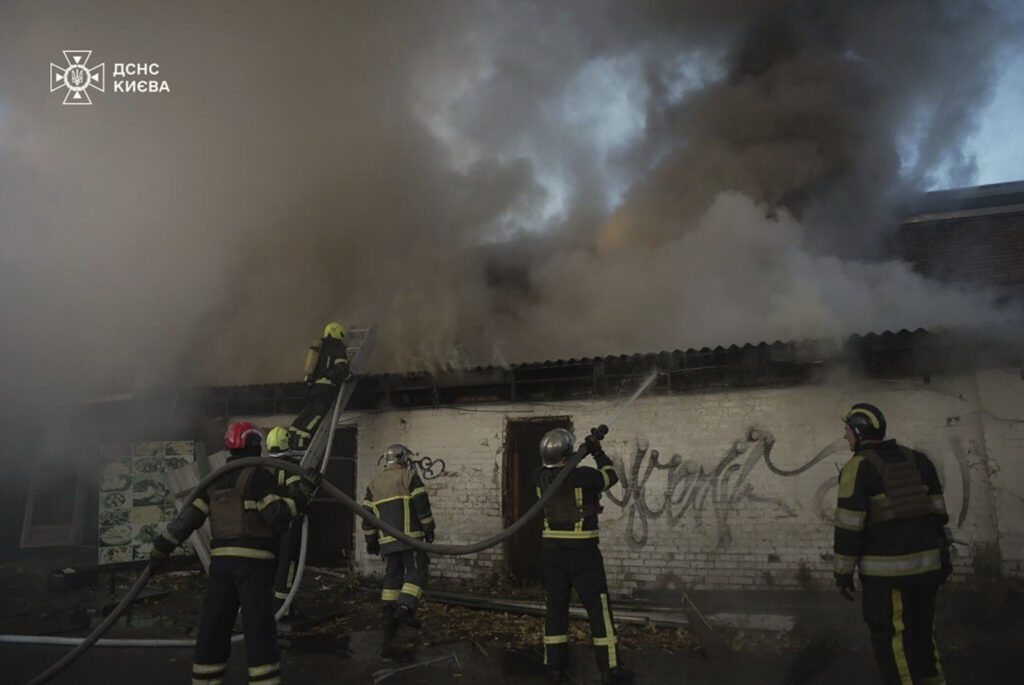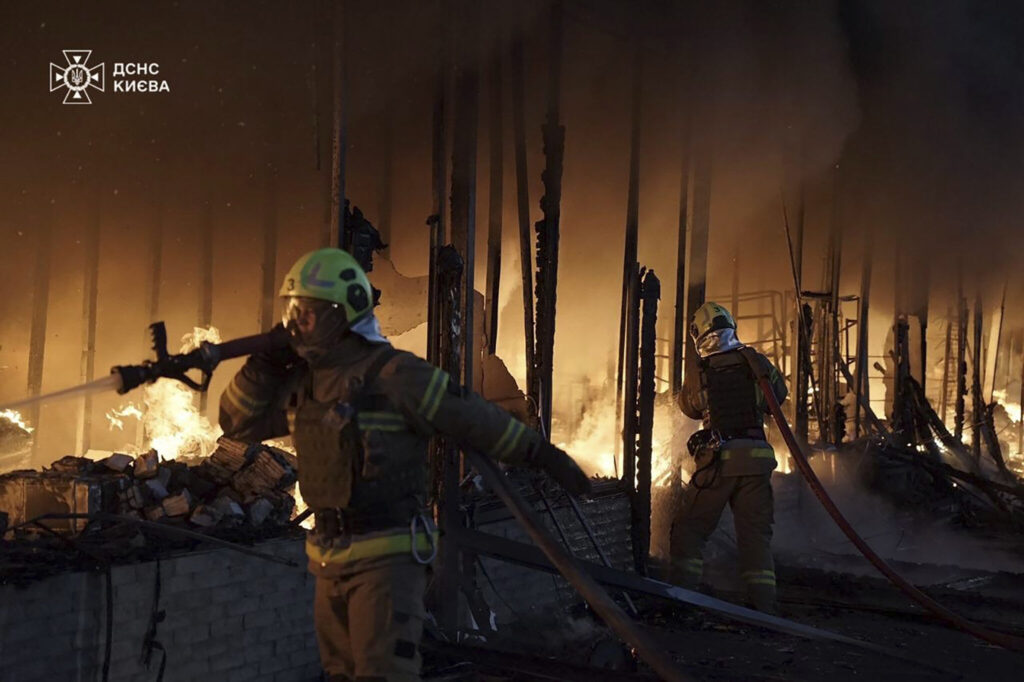Kyiv drone attacks/ Russia Ukraine war update/ Ukrainian air defenses/ Russian Shahed drones/ Western support Ukraine/ Newslooks/ KYIV/ Ukraine/ J. Mansour/ Morning Edition/ Russia launched an intense eight-hour drone attack on Kyiv, injuring two people and causing damage to buildings. Ukrainian defenses intercepted dozens of drones, but the constant attacks are wearing down the city’s defenses and testing residents’ resolve. With the conflict nearing 1,000 days, Ukraine’s need for continued Western support is increasingly urgent amid shifting U.S. political dynamics.

Kyiv Under Drone Siege: Quick Look
- Attack Duration: An eight-hour Russian drone assault targeted Kyiv overnight.
- Damage and Injuries: Debris hit buildings, including a hospital and residential towers, injuring two.
- Defense Challenges: Ukraine intercepted 36 drones, but Russia’s drone tactics are straining air defenses.
- Western Support Uncertainty: Ukraine’s future aid needs are complicated by the U.S. election.
- Broader Strategy: Russia appears to be stockpiling missiles and aiming to exhaust Ukrainian defenses.
Intense 8-Hour Russian Drone Attack Hits Kyiv as War Nears 1,000 Days
Deep Look
In a relentless assault lasting over eight hours, Russian drones barraged Kyiv overnight, escalating the pressure on Ukraine’s capital as the war nears its 1,000th day. Ukrainian air defenses intercepted three dozen drones, but falling debris caused widespread damage, including a blaze on the 33rd floor of a residential tower, along with injuries to at least two people.
The Growing Intensity of Russian Drone Attacks
Russian forces used a mix of solo drones and large swarms, flying them from different directions and altitudes, likely to stress Kyiv’s air defense systems. Ukrainian officials confirmed that the city’s defenses neutralized dozens of the drones, yet debris still struck a hospital and several buildings, leaving damage and sparking fires.
The frequency of these attacks on Kyiv has increased dramatically, with drones filling the city’s skies nearly every night. Ukrainian President Volodymyr Zelenskyy noted that Russia is deploying about ten times as many Iranian-made Shahed drones as it was last year, making the continuous drone noise and explosions a near-constant source of anxiety for Kyiv residents.
According to Andrii Kovalenko, who heads Ukraine’s Center for Countering Disinformation, Russia’s drone strategy aims to conserve its more powerful missiles while still keeping pressure on Ukrainian civilians and defenses. The drones are used to create psychological and physical strain, depleting Ukraine’s defenses and priming the country for potential future missile attacks.
Ukraine’s Dependence on Western Support
As the war drags on, Ukraine’s military is increasingly reliant on Western support to counter Russia’s superior arsenal. However, the recent election of Donald Trump in the United States has introduced new uncertainty about the longevity of U.S. assistance. Trump has previously questioned the level of U.S. aid to Ukraine, and it remains to be seen whether his administration will continue the current level of support.
This shift in U.S. politics adds urgency to Ukraine’s need for sustained backing from its allies, as it continues to defend against relentless Russian strikes. The ongoing support from NATO and Western countries has been critical, and any change could affect Ukraine’s resilience in a prolonged conflict.
Russian Strategy and Future Threats
Russia’s drone attacks are primarily carried out with Shahed drones, which lack the destructive power of missiles but are effective in disrupting civilian life and weakening defenses. These drones, combined with occasional missile strikes, keep Ukrainian cities under constant pressure, contributing to Ukraine’s energy crisis by targeting its power infrastructure.
The long-term aim appears to be twofold: to drain Ukraine’s resources and undermine Western support by drawing out the conflict, testing both the Ukrainian people’s endurance and their allies’ patience.
In addition to Kyiv, Russia’s strikes extended to other regions. In the southern city of Odesa, debris from a Russian drone injured one person and damaged an 11-story building. Meanwhile, in the Zhytomyr region west of Kyiv, power outages were reported following another Russian attack. This systematic targeting of Ukraine’s infrastructure adds to the humanitarian and logistical challenges facing the country as winter approaches.
Conclusion
As the Ukraine conflict edges closer to 1,000 days, the unyielding intensity of Russian attacks underscores the high stakes of continued Western support. The barrage of drones on Kyiv reflects a broader strategy to exhaust Ukraine’s defenses and create a climate of fear, while the political shifts in the United States introduce new questions about the future trajectory of the war.







